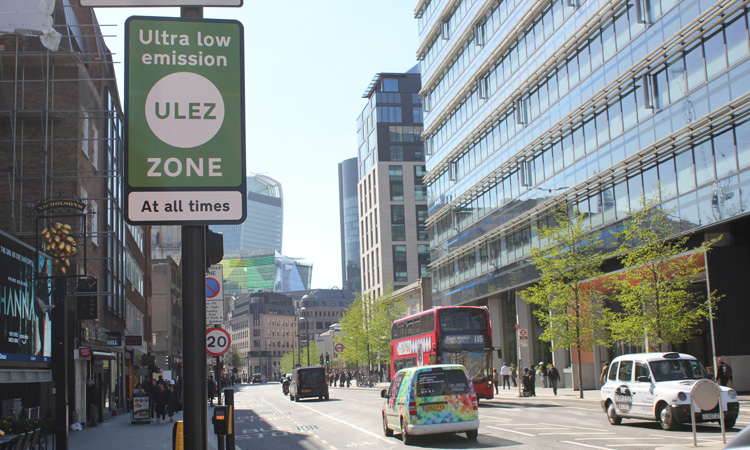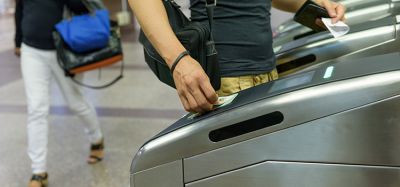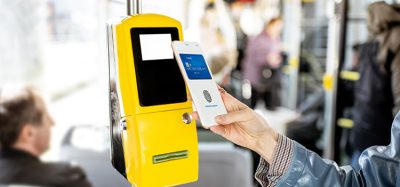Survey: how has London’s Ultra Low Emission Zone impacted travel?
- Like
- Digg
- Del
- Tumblr
- VKontakte
- Buffer
- Love This
- Odnoklassniki
- Meneame
- Blogger
- Amazon
- Yahoo Mail
- Gmail
- AOL
- Newsvine
- HackerNews
- Evernote
- MySpace
- Mail.ru
- Viadeo
- Line
- Comments
- Yummly
- SMS
- Viber
- Telegram
- Subscribe
- Skype
- Facebook Messenger
- Kakao
- LiveJournal
- Yammer
- Edgar
- Fintel
- Mix
- Instapaper
- Copy Link
Posted: 5 May 2020 | Sam Mehmet (Intelligent Transport)
In a bid to determine how London’s Ultra Low Emission Zone (ULEZ) has impacted travel in the city one year since its introduction, a survey questioned 1,000 commuters to find out more.


Motorbike insurer Bikesure, recently surveyed 1,000 commuters in London to find out how the Ultra Low Emission Zone (ULEZ) has impacted them.
Despite the fact that the ULEZ has been temporarily suspended to support key workers during the COVID-19 pandemic, the survey explored the changes the ULEZ has made on the lives of London commuters, one year on.
Respondents were asked whether they changed their usual mode of transport once the ULEZ was introduced on 8 April 2019.
The survey revealed that:
- 65.3 per cent of Londoners changed their usual mode of transport
- 34.7 per cent did not change their usual mode of transport.
When comparing these figures to Bikesure’s previous ULEZ survey, the data showed that last year, 37 per cent of commuters had already changed their usual mode of transport before the ULEZ was introduced.
A further 46 per cent of commuters were planning to change their usual mode of transport once the ULEZ was introduced, meaning that 82.1 per cent of commuters either had already changed or were going to change their usual mode of transport.
However, only 65.3 per cent of Londoners actually changed the way they travel, which is said to be lower than anticipated.
As part of the survey, respondents were asked to clarify when they changed their vehicles.
The survey found that most Londoners changed their vehicles one-three months after the ULEZ was implemented, while more than a quarter changed before the ULEZ was implemented on 8 April 2019. In fact:
- 28.3 per cent changed before the ULEZ was implemented on 8 April 2019
- 45.2 per cent changed one-three months after the ULEZ was implemented
- 19.9 per cent changed four-six months after the ULEZ was implemented
- Four per cent changed seven-nine months after the ULEZ was implemented
- 2.6 per cent changed 10+ months after the ULEZ was implemented.
As part of the survey, the commuters were also given a multiple-choice question to see which combination of transportation modes and services they changed to after the ULEZ was introduced on 8 April 2019. The survey showed that:
- 64 per cent of those who changed their usual mode of transport now use public transport
- 43.5 per cent of those who changed their usual mode of transport now walk
- 22.8 per cent of those who changed their usual mode of transport now use a low-emissions car
- 19.6 per cent of those who changed their usual mode of transport now use a low-emissions motorcycle or scooter/moped
- 17 per cent of those who changed their usual mode of transport now use a push bike.
Among the questions, respondents were also asked how they felt about the ULEZ. This year, the number of people who thought the ULEZ is a good idea slightly decreased since last year. In fact:
- This year, 44.9 per cent of people thought the ULEZ was a good idea and were glad it was brought in, compared to 47 per cent of people who thought the same last year.
Commuters in London were also given a multiple choice question about the ULEZ expansion, in which the zone will expand to the North and South Circular roads in 2021.
30.9 per cent of people said that they won’t be able to afford to drive/ride in London anymore, suggesting that even more people will be affected financially. 25.3 per cent said they will drive/ride in London less than they do now and 12.8 per cent said they will change to a low-emissions mode of transport.
Related topics
Air Quality, Alternative Power, Passenger Accessibility, Passenger Experience, Sustainable Urban Transport, Transport Governance & Policy
Related cities
London
Related organisations
Bikesure








